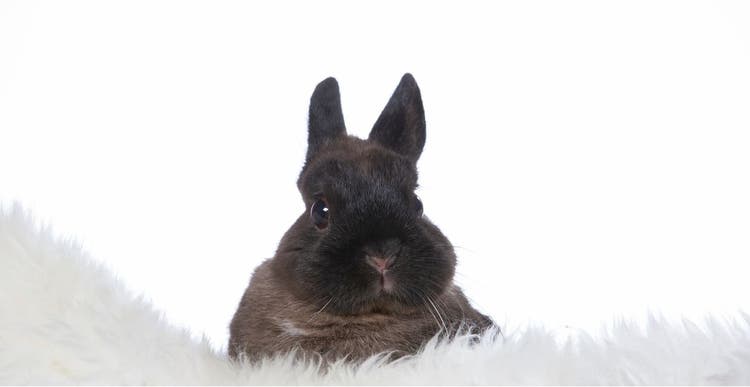
Choosing a Polish Rabbit
If you’ve ever seen a magician pull a rabbit out of a hat, the odds are good that it was a Polish rabbit. The Polish rabbit is a compact breed with a reputation for being high-strung, despite loving attention from their owners. They were developed in Belgium as food, but as time progressed, this breed became more popular as a pet.
History and Origin
Despite the name, the Polish rabbit is thought to have originated in Belgium and has been exhibited in England since 1884. Many believe that they were developed from Dutch and Himalayan rabbits in the 1860s. The Polish rabbit was originally developed as a meat breed and was much larger than the contemporary version.
Appearance
Today, the Polish rabbit is considered a pet and is classified as a fancy breed. They are small rabbits with short ears that touch each other all the way to the tips. This rabbit has a short head, full cheeks, and large eyes. The Polish breed does not carry the “dwarf gene,” though it only weighs about 3 to 4 pounds.
The Polish rabbit has short fur that only needs to be groomed once or twice weekly. Polish rabbits start to shed during the spring, which may lead to additional grooming sessions to maintain the coat.
There are six types of Polish rabbit coat colors and markings that are accepted by the American Rabbit Breeders Association (ARBA):
- Ruby-Eyed White (REW)
- Black
- Blue
- Chocolate
- Blue-Eyed White (BEW)
- Broken pattern (any color mixed with white)
Until the 1950s, most Polish rabbits were white with either red or blue eyes. The red-eyed white is a true albino, while the blue-eyed white has the Vienna white gene, which gives the false appearance of albinism. In 1957, the ARBA approved the black and chocolate Polish, followed by the blue variety in 1982, and broken variety in 1998.
Housing and Care
Caring for a Polish rabbit is relatively easy. Because of their small size, this breed only needs enough enclosure space to stretch out, making them an optimal pet for apartment dwellers. Like most small-breed rabbits, Polish tend to be higher strung than their larger counterparts. They are also not ideal pets for small children, since they can be easily dropped, injured, and stepped on. Their high-strung nature makes them better suited for a mature, rabbit-loving, adult home.
Feeding
Like all rabbits, the Polish diet consists of hay, pellets, leafy greens, fruits, and vegetables, though commercial pellets are recommended for domesticated animals. Feed your rabbit 1/4 cup of pellets per 5 pounds of body weight every day. For rabbits under 8 months of age, feed unlimited plain alfalfa pellets. Fresh rinsed greens, vegetables, and fruit, as well as grains and hay, can be given as supplements. Free choice hay, such as Timothy, should always be available and changed daily. Alfalfa hay, which is too rich in calcium, should not be offered to rabbits over 8 months of age. Never feed your rabbit yard clippings, which may be treated with harmful chemicals.
Health Concerns
Polish rabbits cannot survive in high or low temperatures. They are also prone to hairball obstructions and matted coats if not groomed weekly. Other health concerns include ear mites, Pasteurella, respiratory disease, dental problems, urinary bladder stones, and fractured backs. Keep a watchful eye on your pet and be sure to address any changes in eating or bathroom habits with your veterinarian immediately.
The average lifespan of a breeding Polish rabbit is 5 to 6 years. By spaying or neutering your Polish early in life, you can increase their life expectancy to around 10 years.